 MAMA XI 158 (Moxeanoi)
MAMA XI 158 (Moxeanoi) 
Funerary doorstone of the family of Aur. Quintus
- Type of monument:
- Funerary doorstone.
- Location:
- Urumbey Çeşmesi (Moxeanoi): at a fountain between Doğla (Yazıtepe) and Emiraz (Ayvacık); said to have been brought from Doğla (Yazıtepe).
- Description:
- White marble doorstone, broken above; upper part of stone cracked left to right. Single door, with two pairs of panels and plain pilasters to left and right; gabled pediment above. In the upper right door-panel, lock-plate; in the lower right panel, door-knocker. In the tympanum, plain round boss. Above the pediment, half-palmettes to left and right; palmette at top. Lines 1-4 of inscription to the left and right of central palmette; lines 5-6 on the moulding of the pediment; lines 7-10 on left-hand pilaster; line 11 between upper and lower panels of door.
- Dimensions:
- Ht. 0.84+ (upper fragment 0.14; lower fragment 0.72); W. 0.76; Th. 0.23; letters 0.020-0.025.
- Record:
- Partial squeeze; MB notebook copy; photograph (1955/92).
- Publication:
- None.
- Date:
- AD 260/1 (Year 345 of Sullan era)
Αὐρ(ήλιος) Κόϊ|ν̣τος
γ´ πατρὶ Κ|οίντ̣ῳ κα̣ὶ̣ [μη]-
τρί μ̣[ο]υ̣ Ἀντ|ωνίᾳ τῇ καὶ
Ἀγαθῇ | γονεῦ-
5σι γλυκυτάτοις μνήμης χά-
ριν καὶ τέκνοις Ζωτικ̣ῷ κὲ Π̣οίμνῃ Ἀ-
χολ[ί]-
vac. ῳ
Ι[- -]
10[- - -]
ἔτους τμε´.
Aur(elius) Quintus, the third of that name, for my father Quintus and my mother Antonia, also called Agathe, my sweetest parents, in memoriam; and for my children Zotikos and Poimne Acholion [...] Year 345.
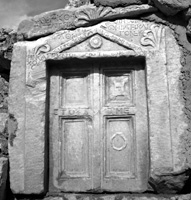
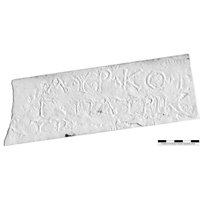
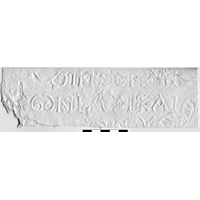
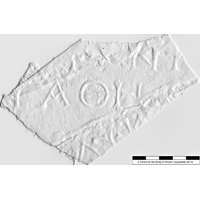
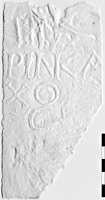
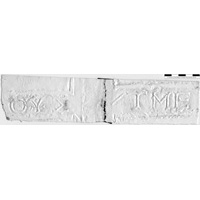



The name Ποίμνη (line 6) is extremely rare; in Asia Minor it appears to be attested only once, at Daldis (LGPN V.A s.v.). In lines 6-8, we appear to have a female nickname Ἀχόλιον (diminutive of Ἀχολίς). The male nickname Ἀχόλιος is relatively common in Asia Minor: cf. MAMA XI 120 (1956/67: Akmoneia: Ἀλέξανδρος ὁ καὶ Ἀχόλις); I.Didyma 207 (Φανίᾳ τῷ καὶ Ἀχολίῳ); I.Tralleis 250 (Thonemann 2007: Παυσανίας ὁ καὶ Ἀχόλιος).
Urumbey Çeşmesi is situated between the villages of Emiraz (modern Ayvacık) and Doğla (modern Yazıtepe). Doğla itself may have formed part of the third-century territory of Diokleia, apparently situated at modern Yeşilhisar, formerly Ahırhisar: see the commentary to MAMA XI 157 (1955/91).
The monument is a relatively plain Typ C gabled doorstone (Waelkens 1986: 4-5, 177) of a type attested in the region of the Moxeanoi in the third century AD (Ramsay, Phrygia II 661, no. 620 = Waelkens 1986: 178-9, no. 446, dated to AD 241/2).
In April 2011, the lower part of the monument, now much damaged, was still lying by a fountain just to the west of the modern village of Doğla (Yazıtepe). Another, unpublished doorstone of a similar type was mortared into the wall of a house in the village near the mosque.